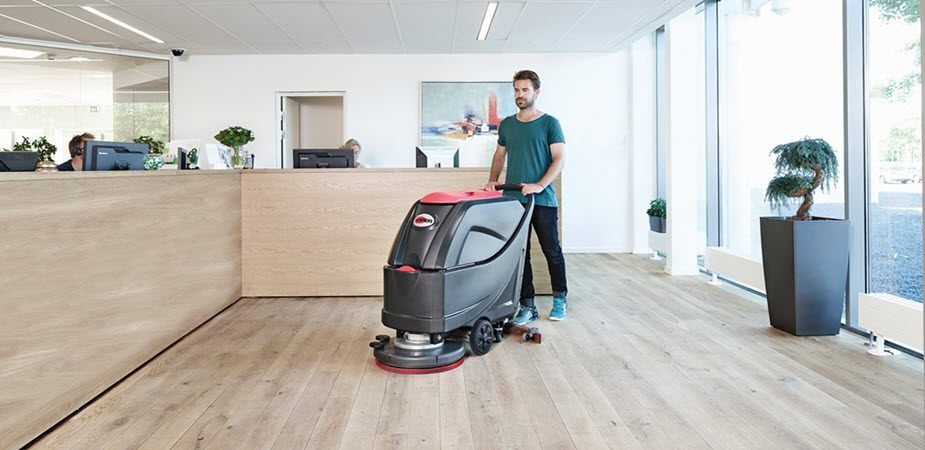
Everything You Need to Know About a Floor Scrubber
Floor scrubbers have revolutionized how everyone maintains cleanliness in various settings, from commercial spaces to industrial facilities. Advanced scrubbers have gained prominence among these cleaning marvels for their efficiency and advanced features. This comprehensive guide will delve into everything you need to know about scrubbers. This article provides a detailed overview of these essential cleaning machines, from their types and operations to maintenance and purchasing considerations.
Understanding the Types of Scrubbers
Scrubbers come in various types, each designed for specific cleaning tasks. Walk-behind scrubbers are ideal for smaller areas and offer ease of maneuverability. Ride-on scrubbers are suitable for larger spaces and provide enhanced productivity. Cylindrical brush scrubbers offer simultaneous scrubbing and sweeping, while disc brush scrubbers excel in deep cleaning. Understanding these types helps you choose the right one for your needs.
How Do Scrubbers Work?
Scrubbers spray water and detergent onto the floor, scrubbing the surface with brushes or pads and then vacuuming the dirty water. This process ensures thorough and efficient cleaning. They are equipped with a recovery tank to store the collected dirty water and a squeegee assembly to dry the floor as they move forward.
Advantages of Using Scrubbers
Scrubbers offer numerous advantages, including:
- Time and Labor Savings: Scrubbers streamline the cleaning process, significantly reducing the time and labor required compared to traditional methods. These machines cover larger areas in less time, allowing cleaning staff to focus on other essential tasks.
- Consistent Cleaning Results: Scrubbers provide consistent and uniform cleaning results across various floor surfaces. Their precision ensures that every inch of the floor receives thorough cleaning, eliminating the risk of uneven or missed spots.
- Reduced Water and Chemical Usage: These scrubbers optimize water and chemical usage by precisely dispensing the necessary amounts for effective cleaning. This not only conserves resources but also reduces operational costs.
- Enhanced Safety with Reduced Slip Hazards: Scrubbers improve safety by removing dirt, debris, and contaminants from floors, reducing slip hazards. This is particularly critical in commercial and industrial settings where safety is paramount.
- Improved Indoor Air Quality through Dust Control: Scrubbers incorporate effective dust control mechanisms, minimizing the release of airborne particles during cleaning. This feature enhances indoor air quality and contributes to a healthier work environment.
- Eco-friendly Cleaning Solutions: Many scrubbers are designed with eco-friendliness in mind. They use environmentally friendly cleaning solutions and reduce the overall environmental impact of floor cleaning operations, aligning with sustainability goals.

Choosing the Right Scrubber
Selecting the right scrubber for your needs involves several considerations:
- Size of the Cleaning Area: Assess the size of the area you need to clean. For larger spaces, a ride-on scrubber may be more efficient, while smaller areas can be effectively cleaned with a walk-behind model. Choosing the right size ensures optimal cleaning productivity.
- Type of Flooring (Smooth, Textured, or Uneven): Consider the flooring material and its texture. Some scrubbers are better suited for smooth floors, while others excel on textured or uneven surfaces. Matching the scrubber to your floor type ensures effective cleaning without damaging the surface.
- Cleaning Frequency: Determine how often you will use the scrubber. High-frequency cleaning may require a more robust machine with a longer battery life, while occasional use may warrant a more budget-friendly option.
- Maneuverability Requirements: Evaluate the layout of your cleaning area, including tight corners and obstacles. Choose a scrubber with the maneuverability to navigate your space comfortably. This ensures thorough cleaning without complications.
- Battery or Corded Operation: Decide between battery-powered or corded scrubbers. Battery-powered models offer greater mobility and flexibility, while corded ones provide continuous operation but with limitations on range. Consider your access to power outlets and the need for uninterrupted cleaning.
- Budget Constraints: Set a budget for your scrubber purchase. While finding a machine that meets your needs is essential, staying within budget is equally important. Balancing your requirements with available options ensures cost-effective and efficient cleaning solutions.
Common Issues and Troubleshooting
Familiarize yourself with common issues that can occur with scrubbers, such as reduced suction, streaking, or uneven cleaning. Troubleshooting tips may involve checking for clogs, adjusting brush pressure, or inspecting squeegee blades.
Sourcing Scrubber Parts
In case of repairs or part replacements, know where to find genuine Scrubber parts. Authorized dealers, online retailers, and specialized equipment repair services are reliable sources for obtaining the right components.
Scrubbers have become indispensable tools for maintaining clean and safe environments. Their versatility, efficiency, and advanced features make them valuable assets in various industries. You can make the most of these cleaning machines by understanding their types, operation, maintenance, and purchasing considerations, ensuring effective and efficient floor maintenance in your facility.









